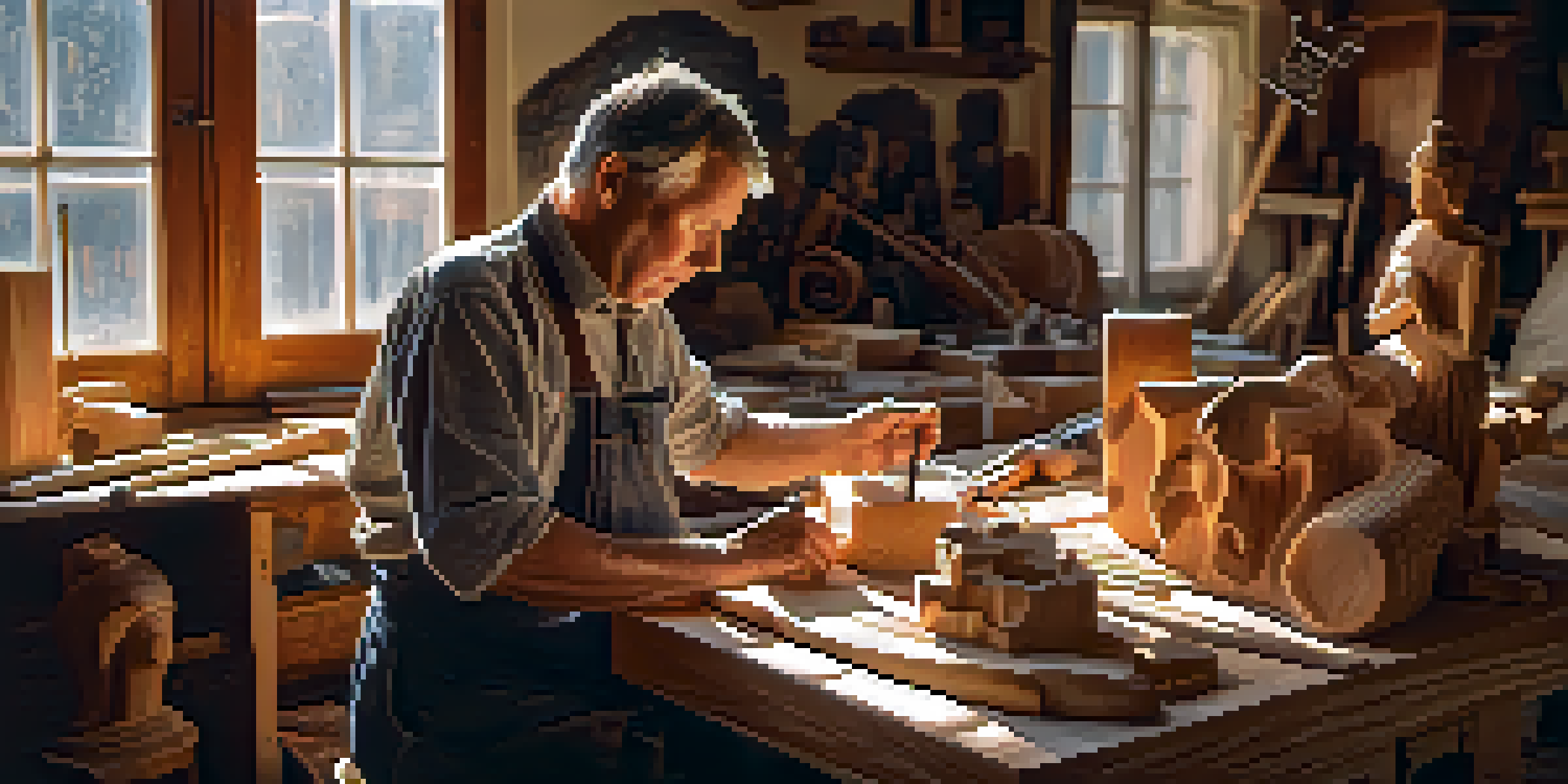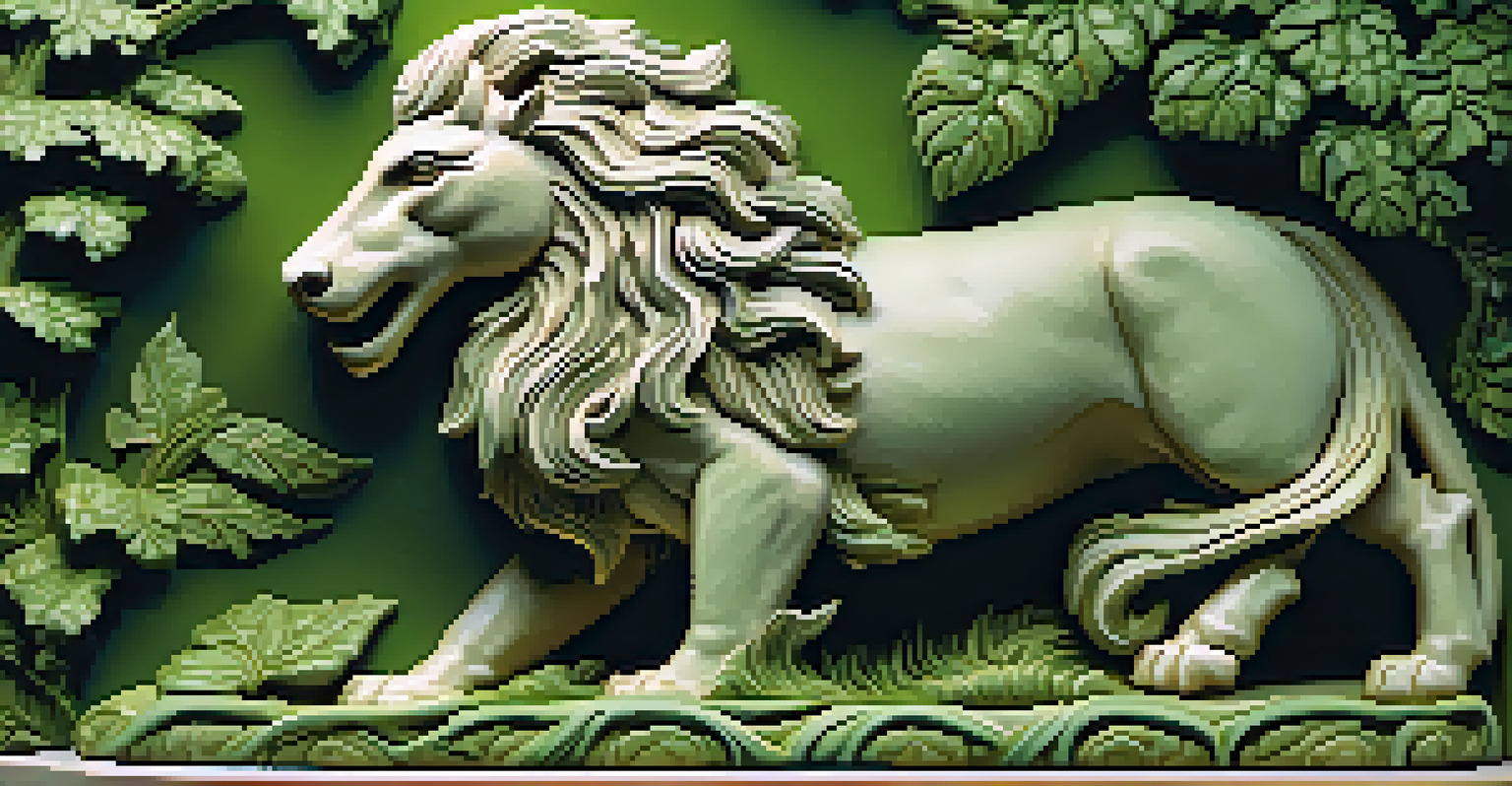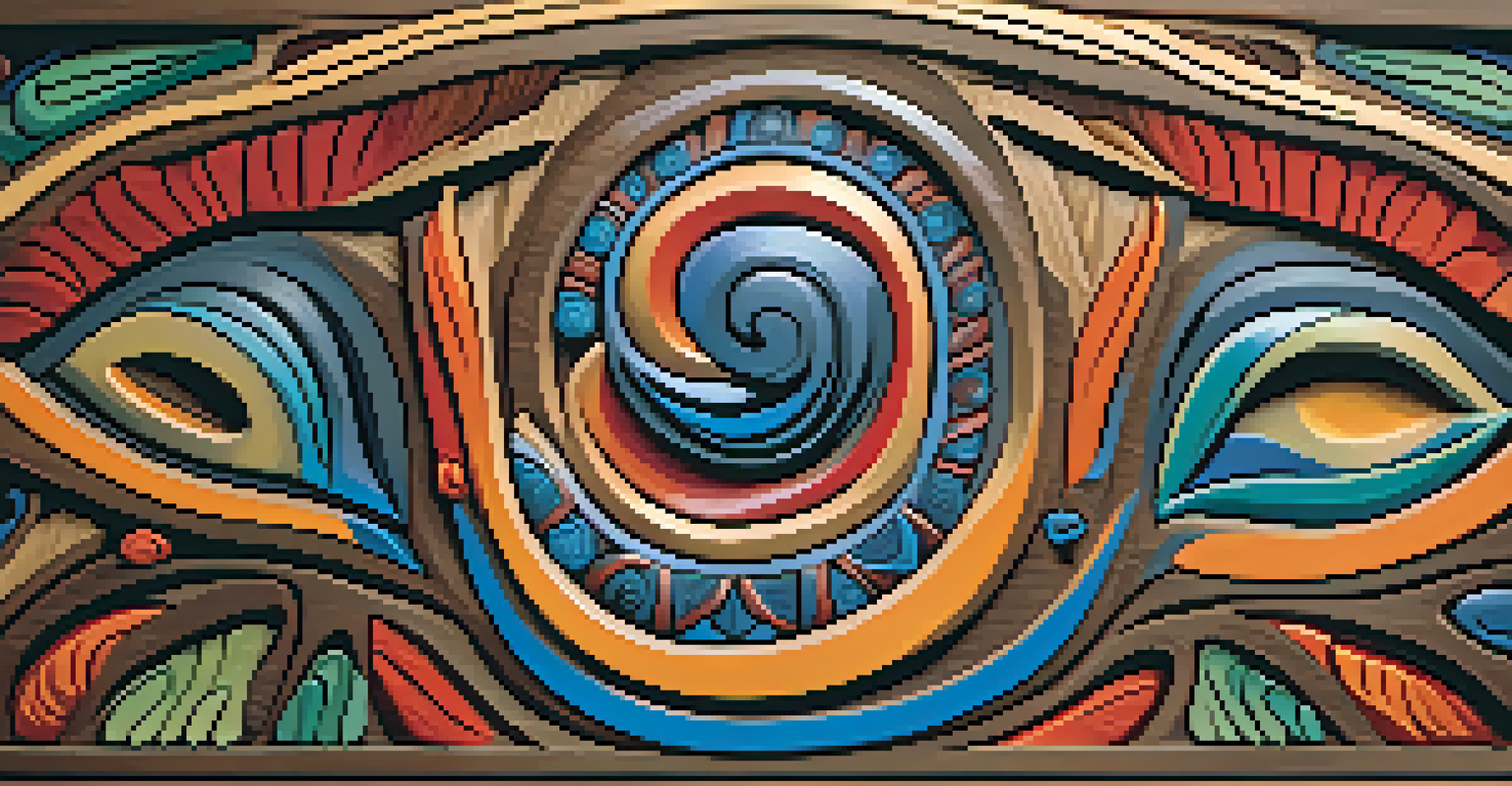The Influence of Carving on Global Cultural Identity

Understanding Carving as an Art Form
Carving, in its simplest form, involves shaping material to create art. This art form can be found across cultures, from wooden sculptures in Africa to intricate stone carvings in Asia. Each piece tells a story, reflecting the beliefs, traditions, and history of the people who create it. It's fascinating how something as tactile as carving can serve as a bridge to understanding diverse cultures.
Art is the most beautiful of all lies.
Beyond aesthetics, carving often has practical uses—think of tools or household items crafted with care. However, the artistic aspect elevates these creations, turning them into cultural symbols. For instance, Maori carvings in New Zealand are not just decorative; they convey lineage and tribal identity. This duality of function and meaning underscores the importance of carving in various societies.
In essence, carving is more than just an art form; it's a profound expression of cultural identity. As artists mold their materials, they also shape their narratives, contributing to a global tapestry of human expression. This rich interplay of art and culture invites us to appreciate carving on a deeper level.
Carving Techniques Across Different Cultures
Carving techniques vary widely around the globe, each reflecting unique cultural values and practices. For example, Inuit artists traditionally carve from bone or stone, creating figures that often symbolize animals or spirits significant to their heritage. In contrast, Asian woodblock printing showcases a different approach, focusing on intricate designs that are both functional and artistic.

These techniques are often passed down through generations, preserving cultural heritage and fostering community. In many cases, the act of carving becomes a communal event, where knowledge is shared, and stories are exchanged. This collective involvement not only strengthens bonds within the community but also enhances the richness of the art itself.
Carving Reflects Cultural Identity
Carving serves as a profound expression of cultural heritage, telling stories that embody the beliefs and traditions of various communities.
By exploring these diverse techniques, we gain insight into how cultures express their identities. Each carving style, whether it’s the precision of Japanese netsuke or the bold forms of African masks, embodies a unique worldview. This diversity illustrates the power of carving to reflect and shape cultural narratives.
Symbolism and Meaning in Carving
Carvings often carry deep symbolic meanings that resonate with cultural identities. For instance, many Native American totems represent ancestral lineage and community values, serving as both art and storytelling devices. Similarly, the intricate carvings found in Hindu temples depict deities and mythological tales, reinforcing spiritual beliefs and practices.
The essence of all beautiful art, all great art, is gratitude.
This symbolism goes beyond mere decoration; it speaks to the heart of what a culture values and believes. Carving can serve as a medium for expressing themes such as love, nature, and resilience. For example, the delicate floral patterns in Persian art often symbolize beauty and the transience of life.
Understanding the symbolism in carving allows us to appreciate the layers of meaning embedded in these artworks. It invites us to engage with cultures on a more intimate level, fostering empathy and respect for their unique identities. Ultimately, the stories told through carving help preserve cultural heritage for future generations.
Carving and Cultural Preservation
In an age of globalization, carving plays a crucial role in cultural preservation. As traditional practices face the threat of extinction, artisans are increasingly focused on keeping their heritage alive through carving. Workshops and cultural programs dedicated to teaching these skills ensure that younger generations can connect with their roots.
For instance, initiatives in Bali, Indonesia, encourage young artists to learn traditional wood carving techniques while also incorporating contemporary styles. This blending of old and new not only preserves the craft but also keeps it relevant in today’s world. Such practices highlight the adaptability of carving as a form of cultural expression.
Techniques Preserve Cultural Heritage
Diverse carving techniques, passed down through generations, not only highlight unique cultural practices but also foster community bonds.
Moreover, the preservation of carving traditions fosters a sense of pride and identity within communities. It encourages dialogue about cultural heritage and the importance of maintaining these practices in a rapidly changing world. In this way, carving becomes not just an art form but a vital link to history and identity.
The Influence of Carving on Modern Art
Carving continues to influence contemporary art, inspiring artists to explore new forms and materials. Many modern sculptors draw from traditional carving techniques, infusing them with innovative concepts. This synthesis of the old and new creates a dynamic artistic landscape that challenges conventional boundaries.
For example, artists like El Anatsui incorporate traditional African techniques into installations that comment on contemporary issues. His work often uses discarded materials, transforming them into stunning pieces that reflect both cultural heritage and modern realities. This intersection of carving and modern art encourages conversations about identity, sustainability, and cultural continuity.
By examining how carving impacts modern artistry, we see a powerful dialogue between past and present. Carving remains a vital source of inspiration, reminding us of our shared human experience. This evolution of carving into contemporary art showcases its enduring relevance in shaping cultural identity.
Carving as a Tool for Social Commentary
In recent years, carving has emerged as a powerful medium for social commentary. Artists use their craft to address pressing global issues, such as environmental degradation, social injustice, and cultural appropriation. This approach not only raises awareness but also invites viewers to reflect on their own roles within these narratives.
For instance, some carvers in sub-Saharan Africa create pieces that critique the exploitation of natural resources. Through their work, they convey the urgent need for sustainable practices and respect for the environment. Similarly, artists from marginalized communities often use carving to reclaim their identities and challenge stereotypes.
Carving as Social Commentary
Artists increasingly use carving to address social issues, transforming it into a medium for activism and cultural critique.
This capacity for carving to provoke thought and inspire change highlights its significance beyond mere aesthetics. It fosters a space where culture and activism intersect, encouraging audiences to engage with important social issues. Carving, therefore, becomes a vital tool for storytelling and advocacy, reinforcing its role in shaping cultural identity.
The Future of Carving in a Globalized World
As the world becomes increasingly interconnected, the future of carving faces both challenges and opportunities. Globalization has led to the blending of styles and techniques, creating exciting new possibilities for artistic expression. However, this fusion can also risk diluting traditional practices, raising questions about authenticity and cultural appropriation.
To navigate this landscape, it’s crucial for artists and communities to engage in conversations about cultural ownership and representation. Initiatives that promote ethical collaboration and respect for traditional knowledge can help ensure that carving remains a meaningful expression of cultural identity. This approach fosters an environment where diverse voices can thrive and be celebrated.

Ultimately, the future of carving will depend on the balance between innovation and tradition. By embracing both, we can keep the spirit of carving alive while honoring the rich histories that shape it. This ongoing evolution will continue to enrich our understanding of cultural identity in a globalized world.